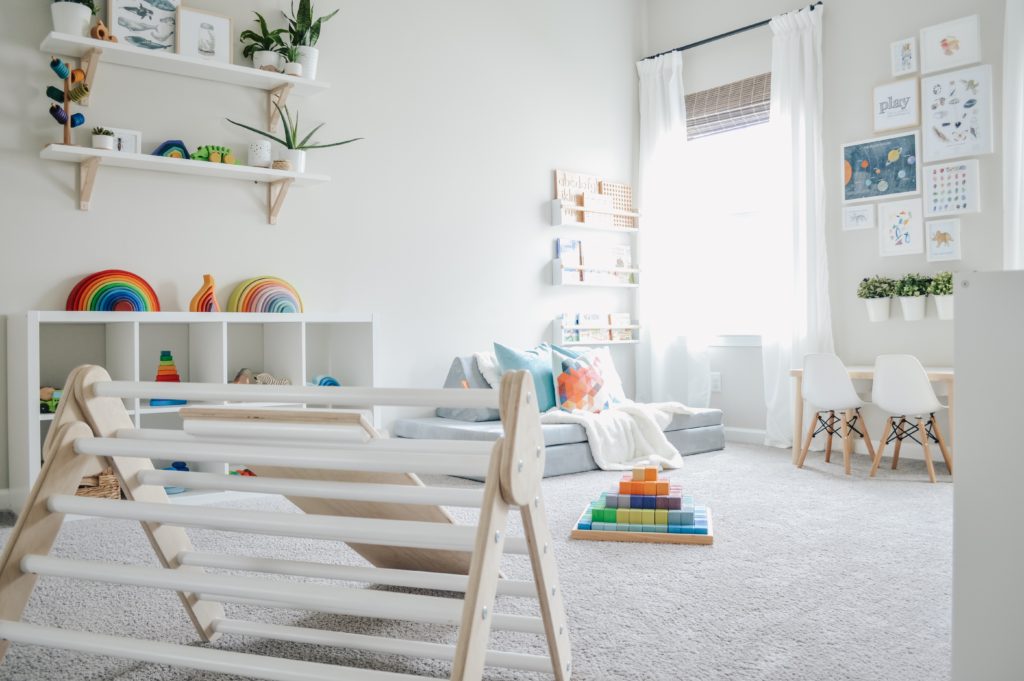
Let’s talk play spaces and setting up one that will not only get used, but will also look good and go with the atmosphere you are trying to create in your home.
The following concepts are things I tried to keep in mind when designing my kids’ playroom. I don’t rigidly adhere to any one philosophy of learning/education, but instead draw on aspects of Montessori, Waldorf, and Reggio that fit with my own beliefs and children’s preference for play and learning.
And fear not, if you don’t have a space to designate as a playroom, you can still use these concepts to set up a corner or play space wherever room allows.
1. PICK A NEUTRAL COLOR PALETTE
Keep wall colors, shelving and furniture neutral. Toys are bright and enticing all on their own. Let them be the star of the show, not the walls. Picking neutral colors also helps keep the atmosphere calm and relaxing, and helps kids concentrate better.
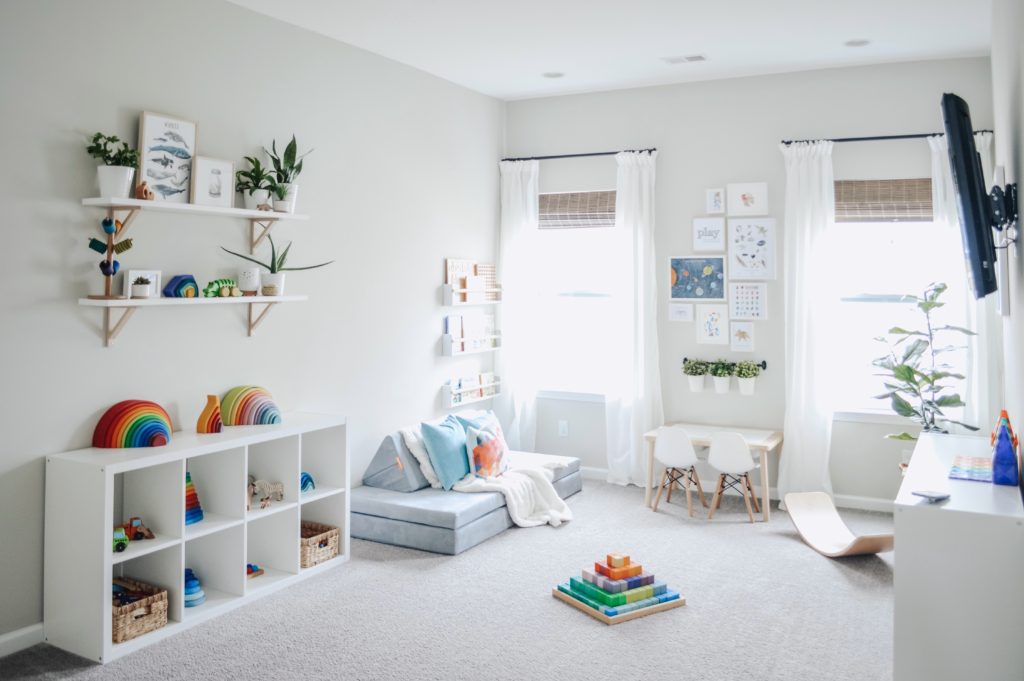
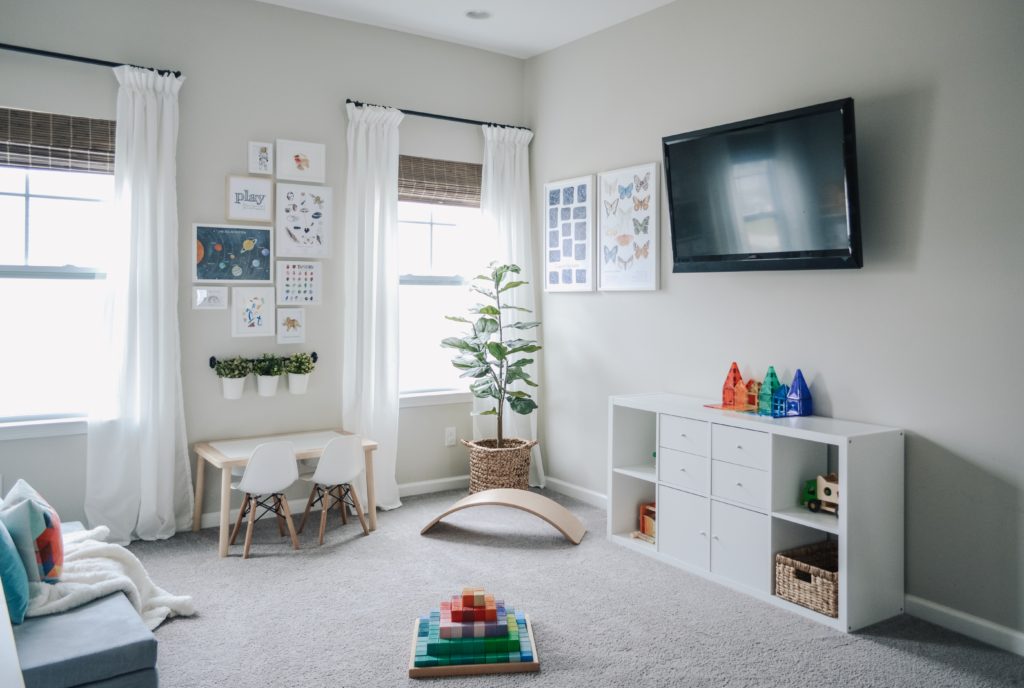
2. CHOOSE NATURAL LIGHT
If at all possible, choose a place that gets a lot of natural light, especially because you will be spending a lot of time in here. This not only boosts Vitamin D, wards off seasonal depression, and improves sleep; but it also gives kids a chance to look out the window and discover what is going on in the world around them. Consider placing a stool at the window if they’re too high for little ones to see out of (like this one, and a can of spray paint if yellow isn’t your color).
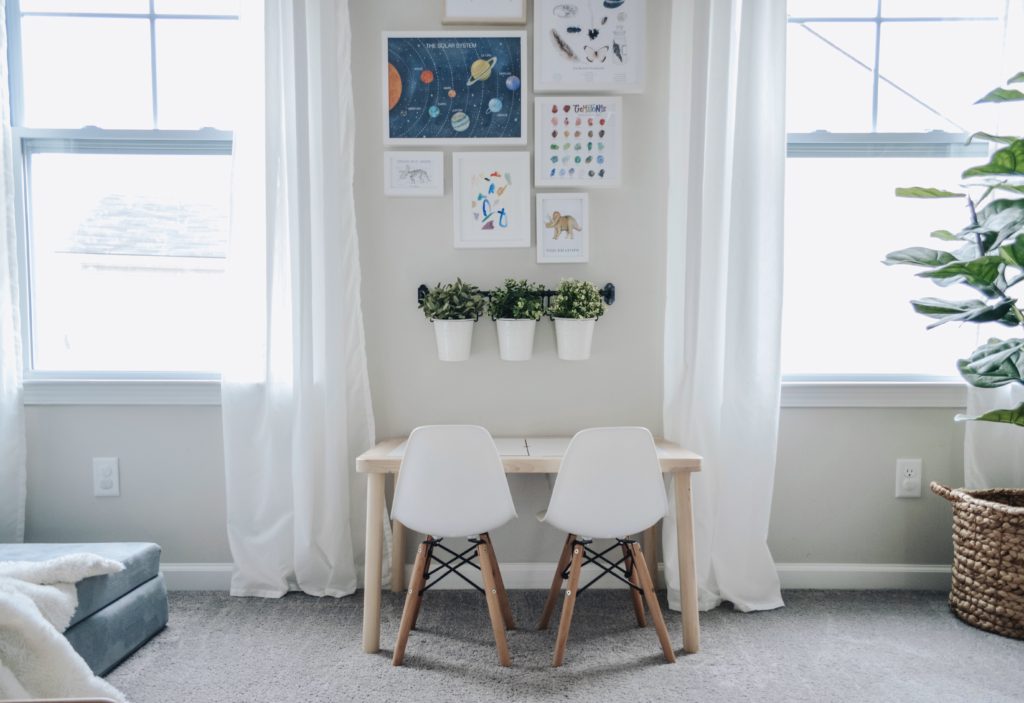
3. KEEP IT SIMPLE
You’ve heard me say it before, but a playroom/space full of toys and clutter actually deters play more than it encourages it. Ever walk into a store and seen so many options that you just turn around and leave because you’re overwhelmed? The same happens to your kids when they look at their play options. Keep fewer toys out (3-4 per kid) and keep the space free of extra clutter.
Along with this, it also helps to have a closet or other storage area to keep toys that are not in rotation organized.
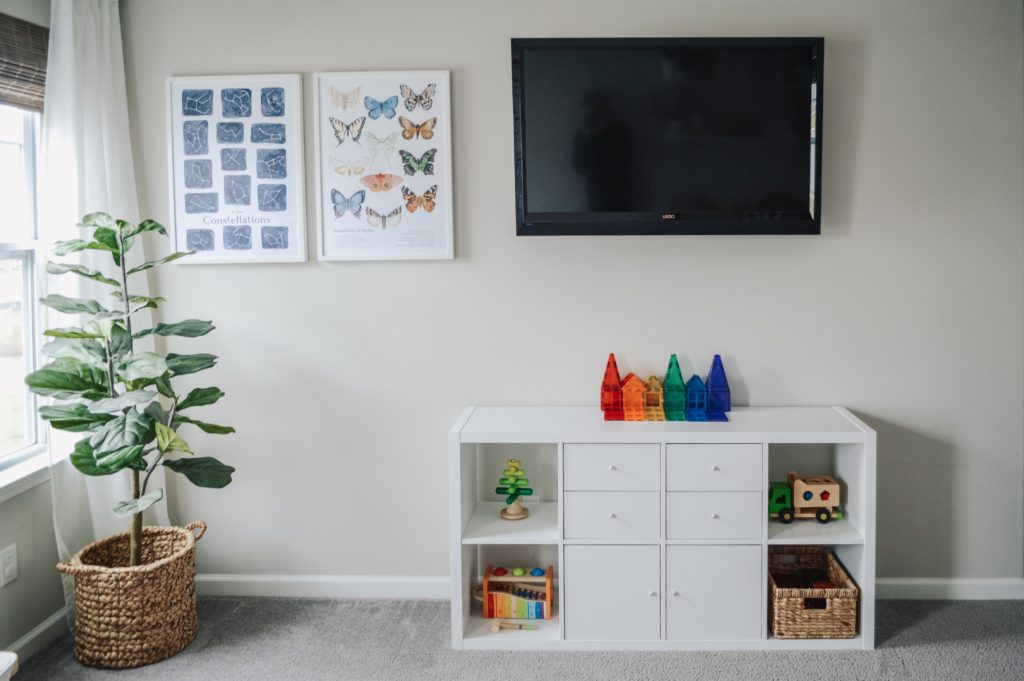
4. PROVIDE LOTS OF OPEN SPACES AND SHELVING
Leave space for play! This is one of the reasons you’ll often see shelving and furniture around the outside of the room, because it leaves a wide open space in the middle for play to happen uninhibited. Using open shelves gives space to display toys and allows kids to see what’s available for play; and leaving the tops of shelves clear, provides an area to build; especially if you have kids of varying ages who like to destroy, more than they like to build.
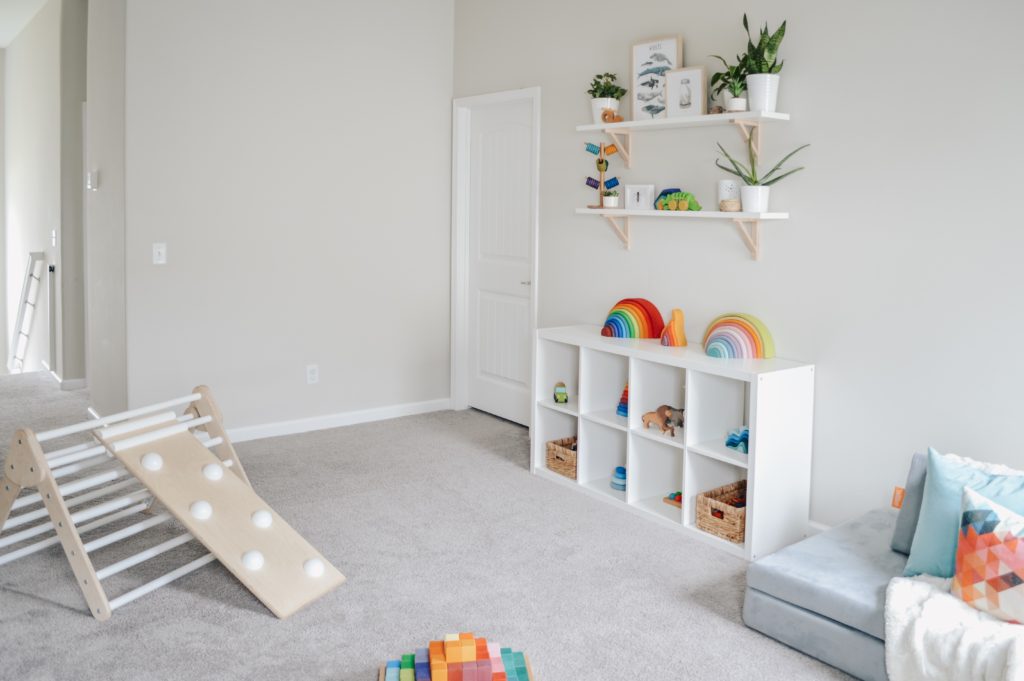
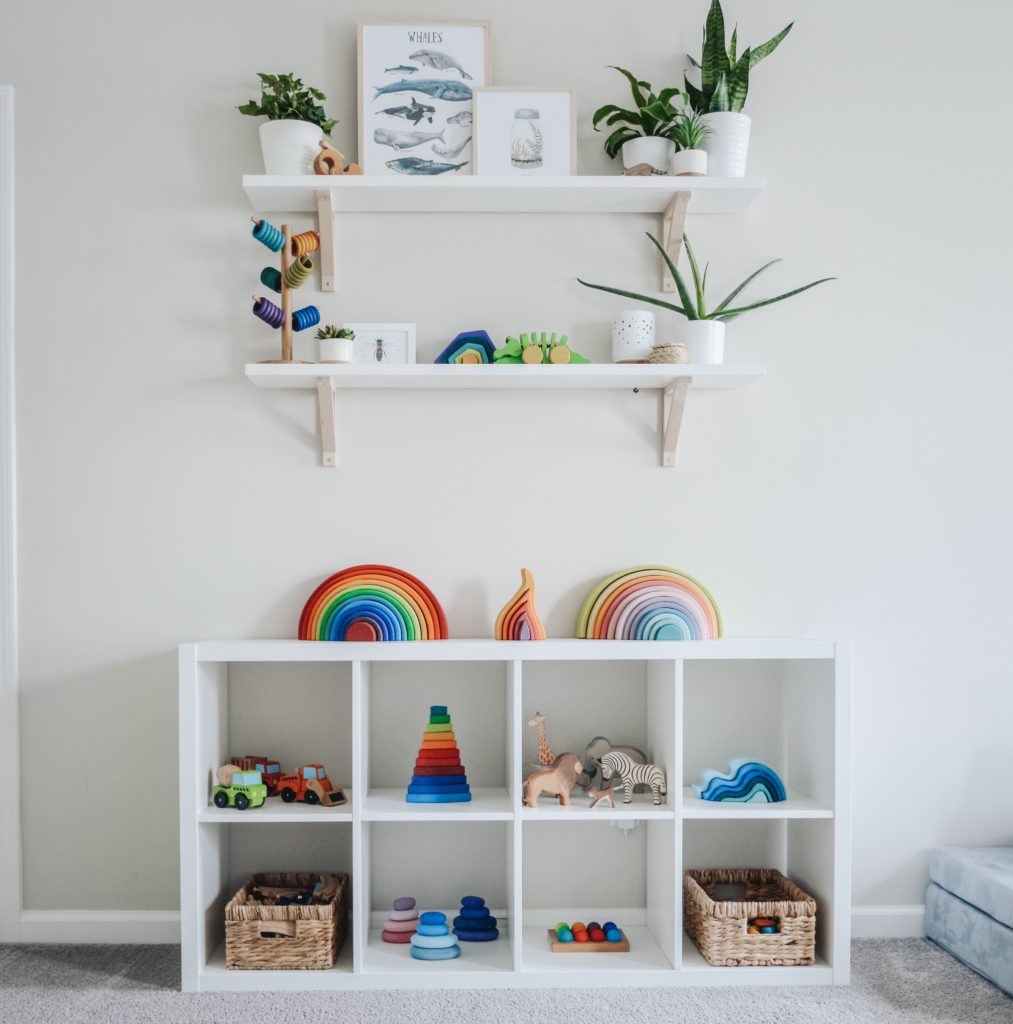
5. KEEP THINGS LOW AND VISIBLE
Pick furniture pieces with a child’s height in mind, because it allows them to be more independent, and they can see their options more clearly. Lower profile furniture also keeps children from climbing shelving to get to the toys they’re after.
Having a kid sized table and chairs gives kids a space to play that is up off the floor, but still at the perfect height for them.
Choosing baskets and trays with a low profile shows kids how pieces fit together, and gives them a place to return them to when they’re finished playing, plus it also helps control the mess. Back when we used to use tall baskets in our cubby shelves (because they hid the giant amount of toys we had), I noticed a pattern. All the bins ended up being dumped out, because someone was trying to find something or see what toys were available. This ended up creating a huge, unnecessary mess to clean up at the end of the day.
Something else you may choose to do, is put a shelf or two up higher on the wall to store toys out of rotation, plants, a diffuser, and other items that you want to keep out of reach of little hands.
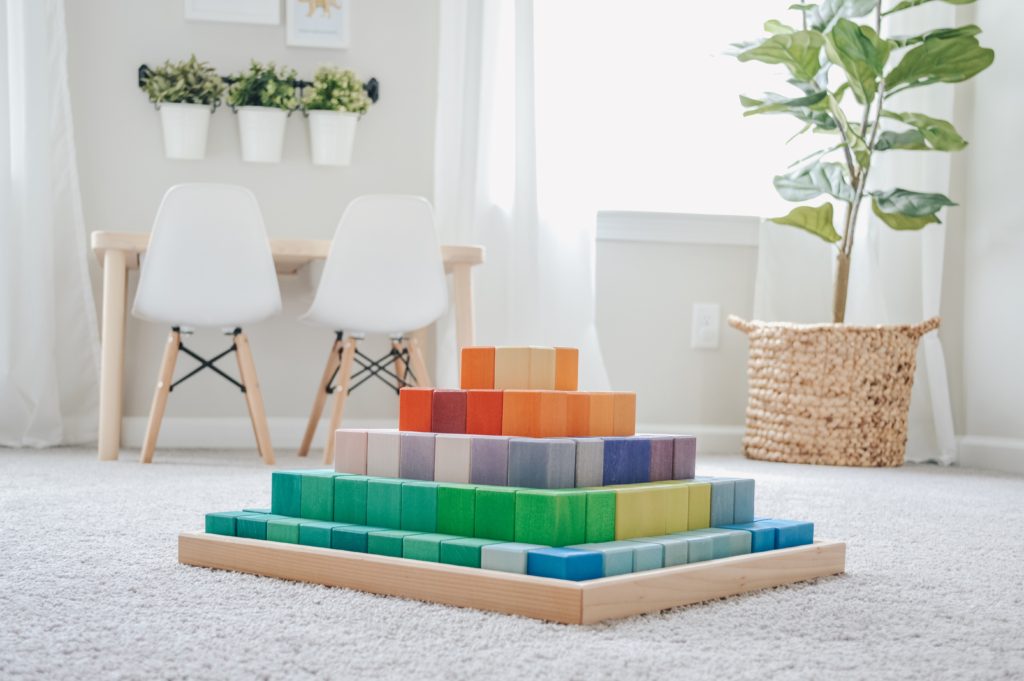
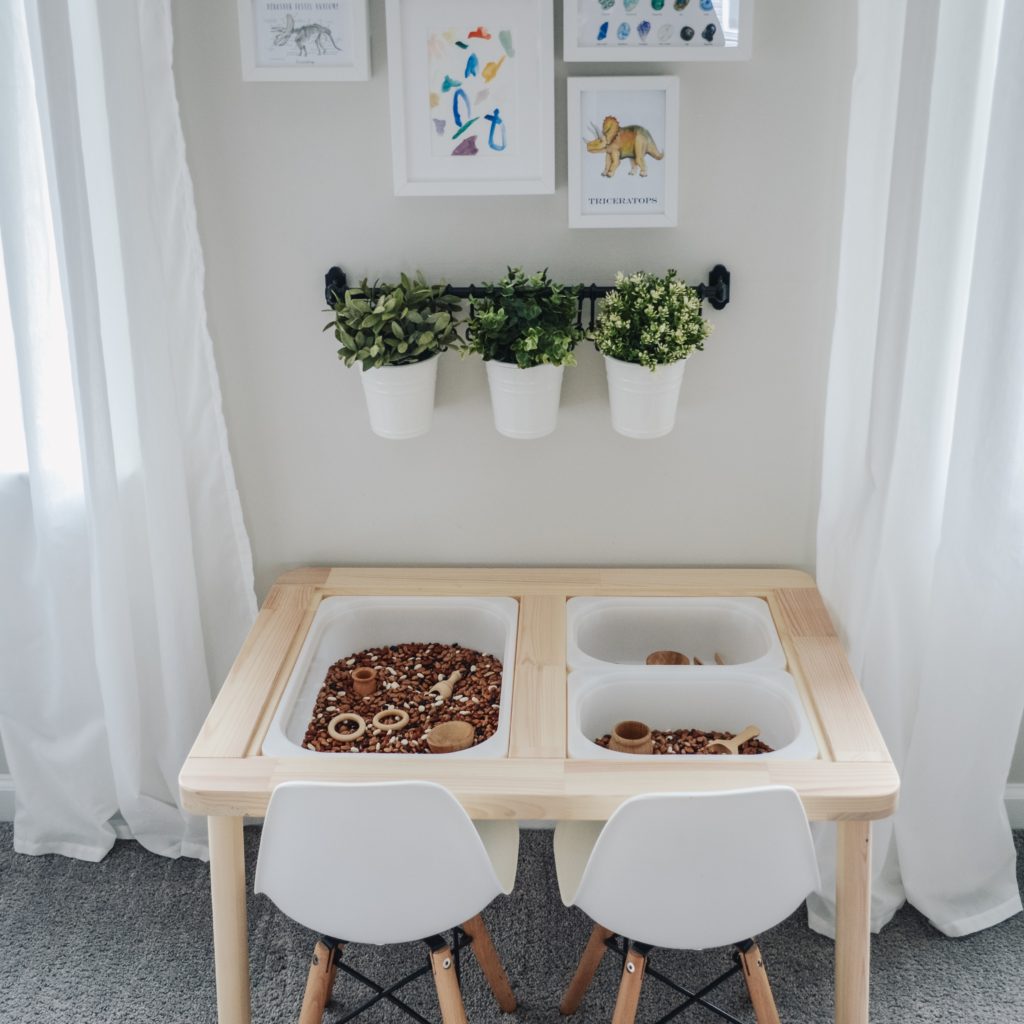
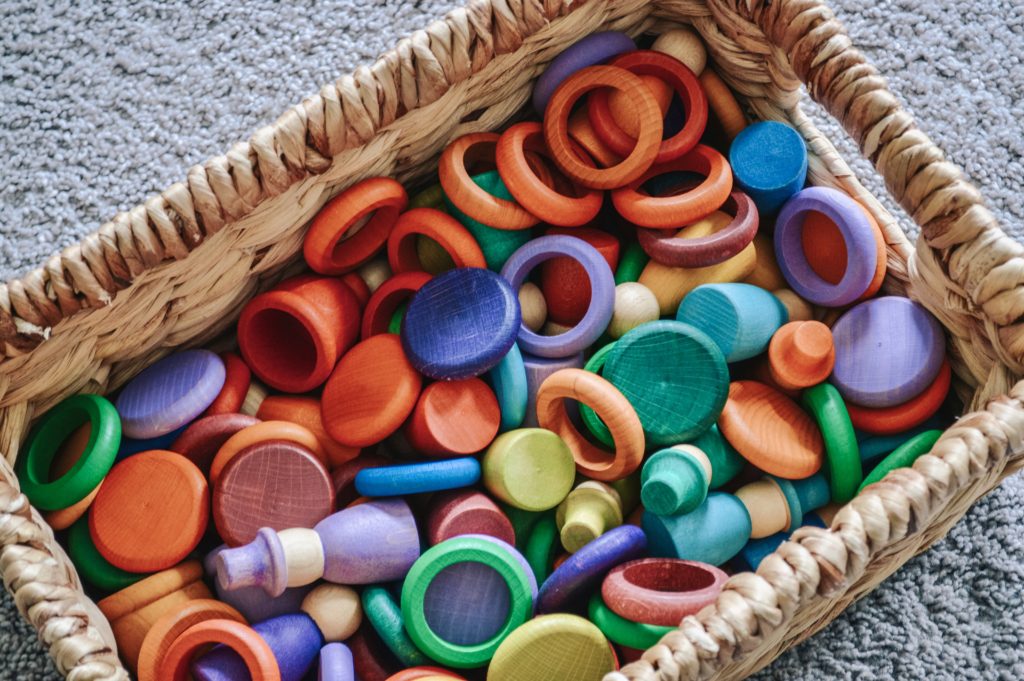
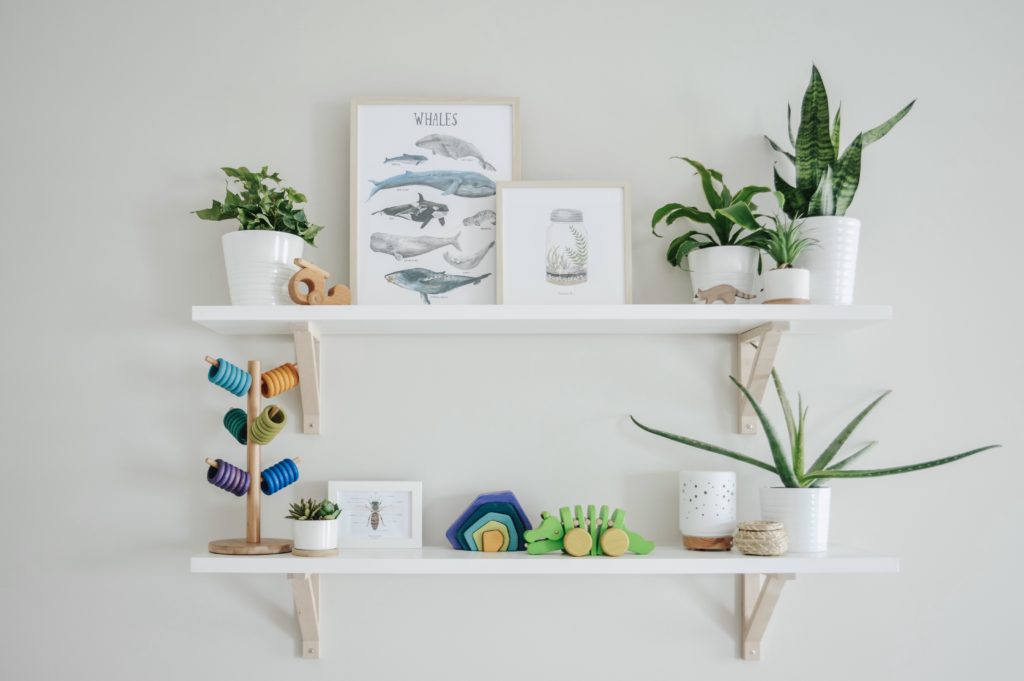
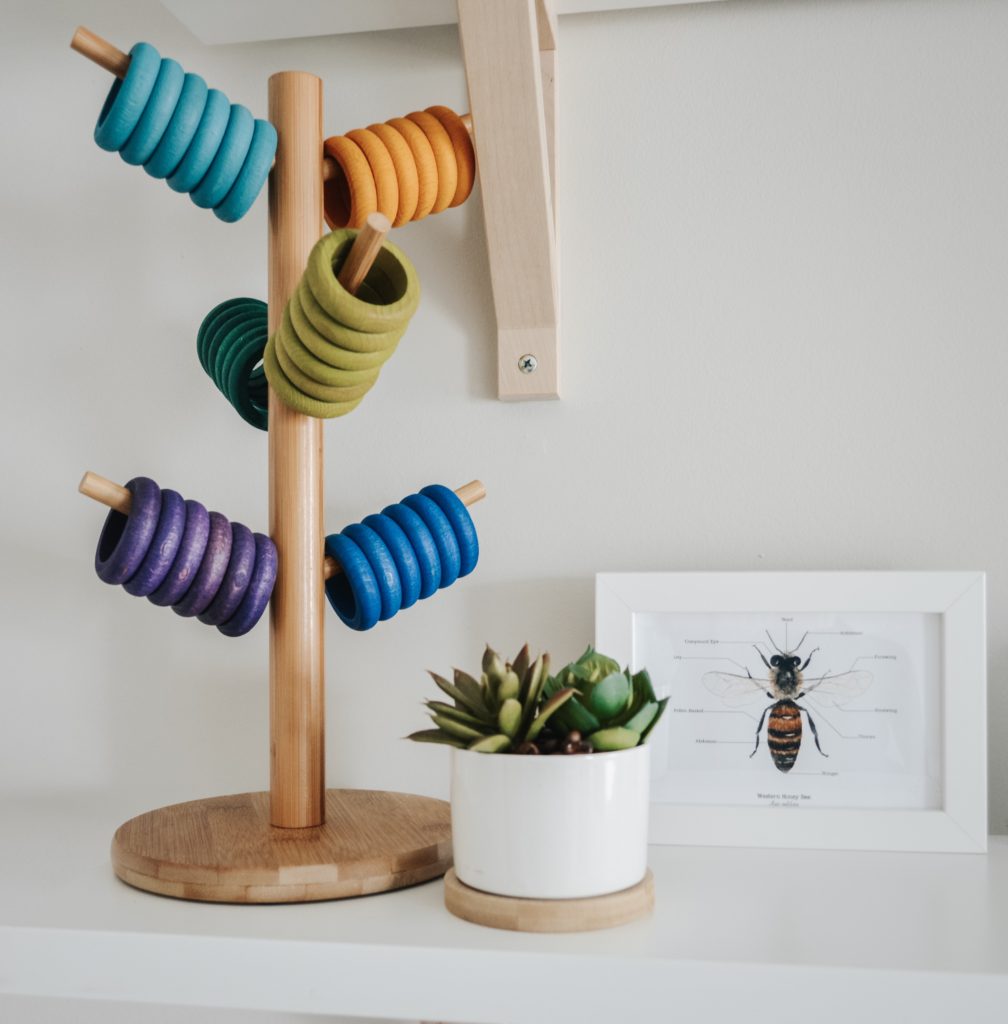
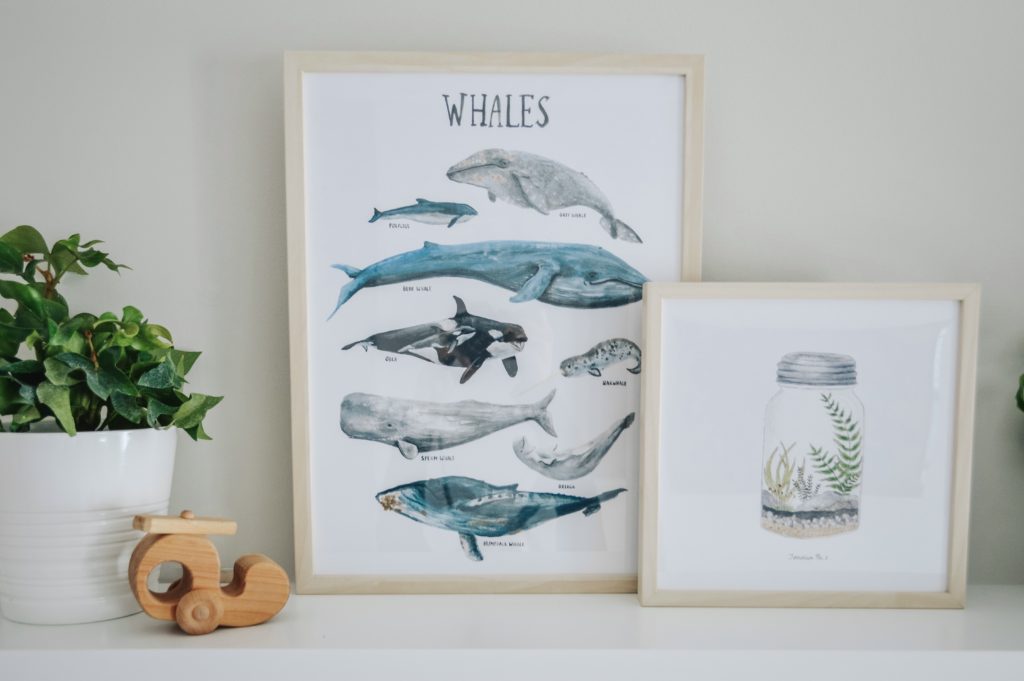
6. GIVE EVERYTHING A PLACE
Believe it or not, kids actually thrive when they have a routine, know what to expect and know where to find things. So give everything in your playroom/space a home- Toys, Books, Art Supplies. If your kids know where to find them, it gives them more independence to do things on their own, and encourages them to take responsibility, and keep things together.
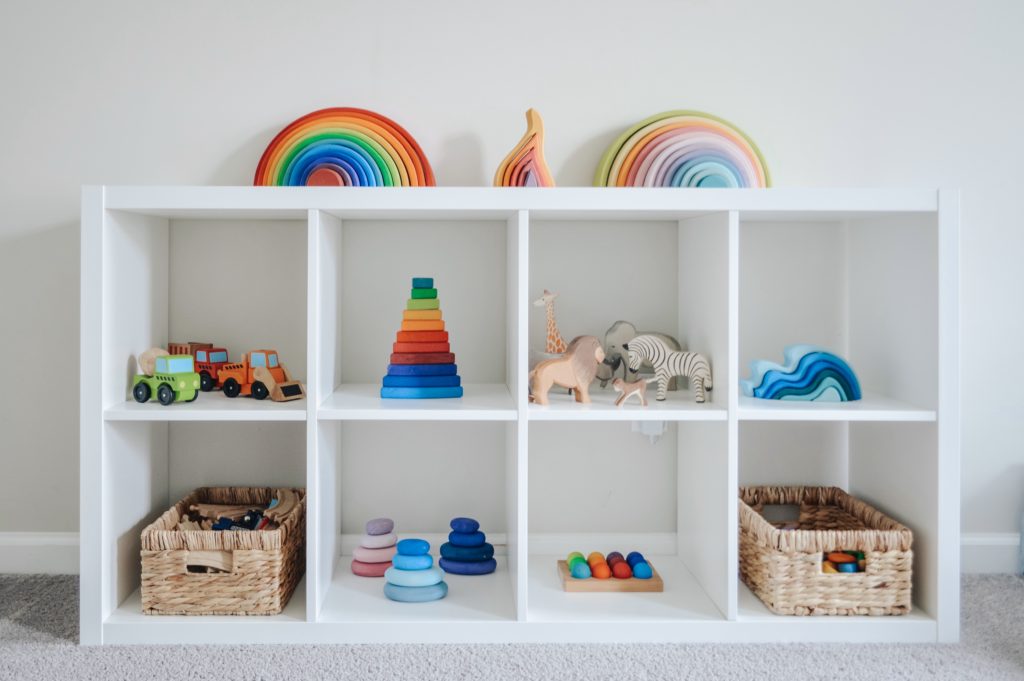
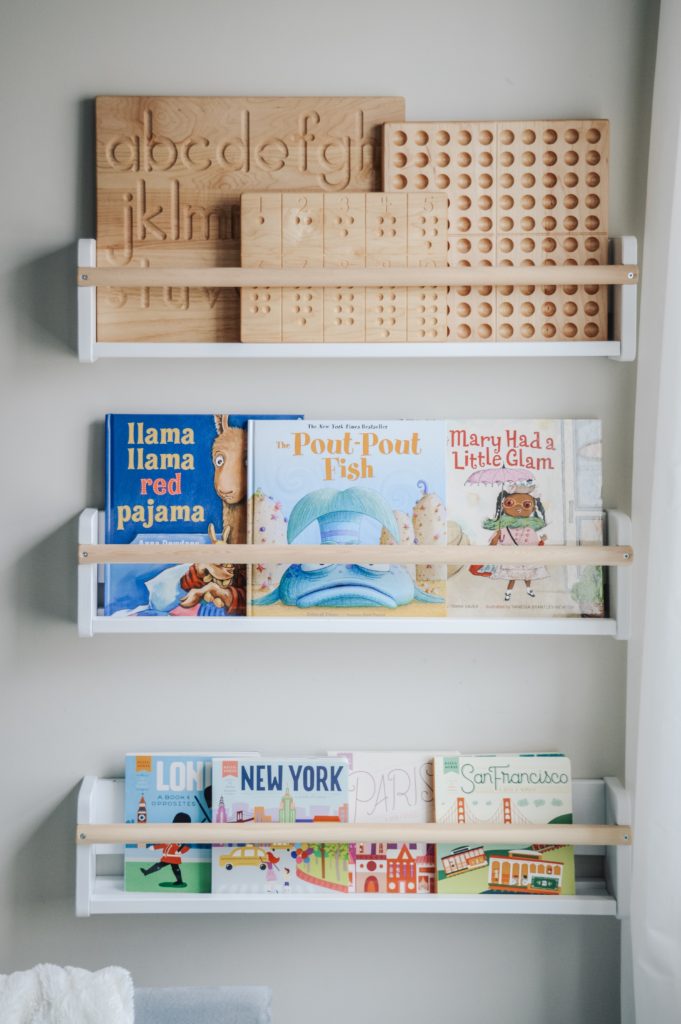
7. INCLUDE NATURE
Bringing the outdoors in helps improve mood, reduces stress, purifies the air and teaches kids how to take care of something. So consider adding a few plants (even if they’re fake), or even a fish.
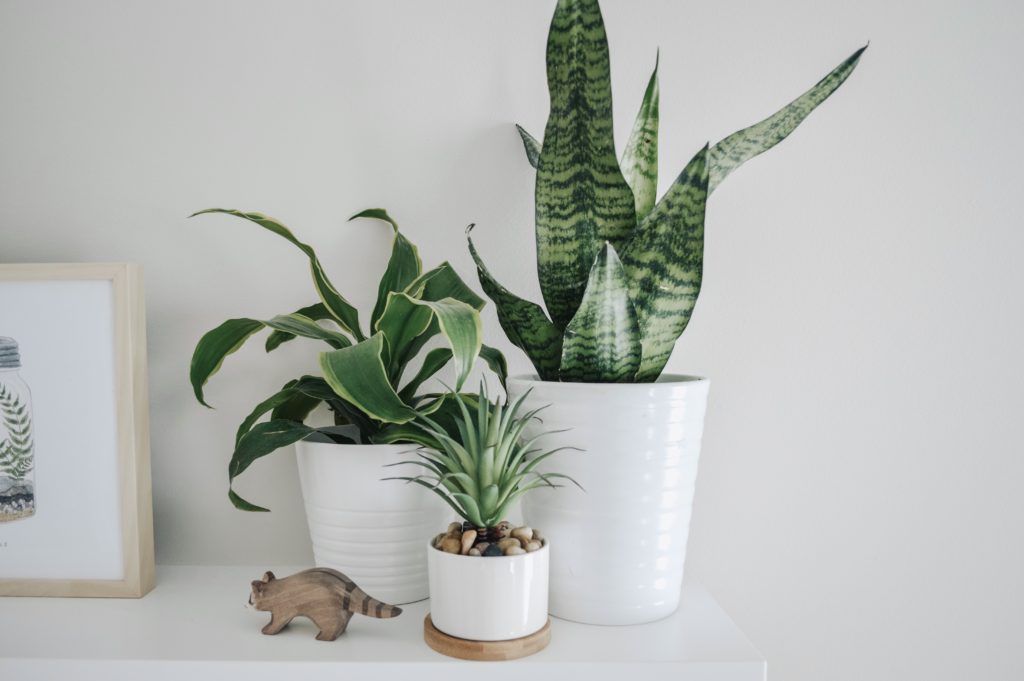
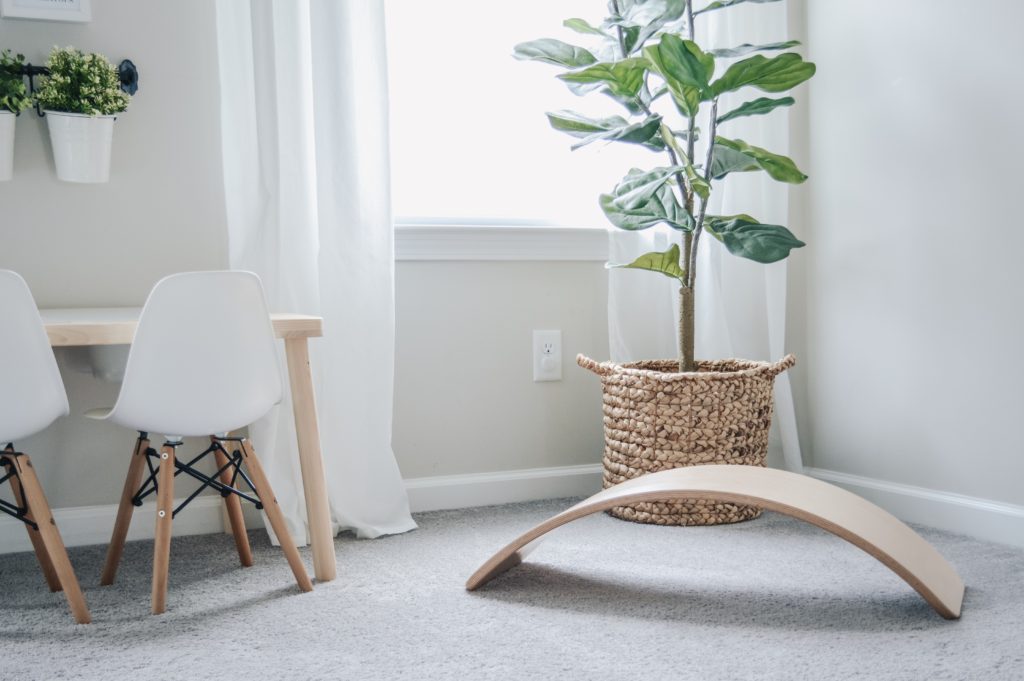
8. CREATE A COZY SPACE FOR QUIET PLAY
Having a space with floor pillows, a Nugget, or something similar gives kids a place to get comfy, read a book, engage in quiet play, or settle down when something has upset them.
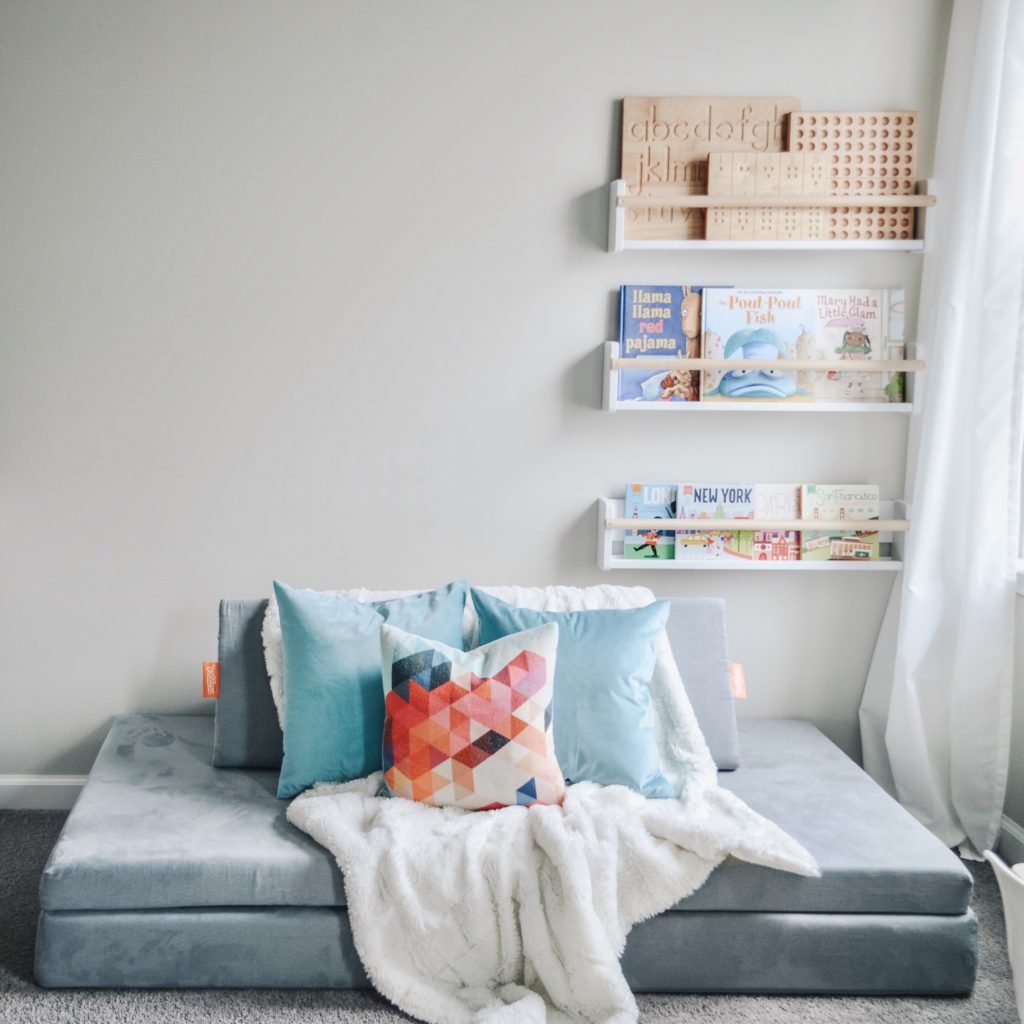
9. DESIGNATE A SPACE TO BE ACTIVE
Children have a ton of energy, so if they’re going to be climbing the walls anyways, why not give them a safe space to get the wiggles out? Pikler Triangles, Rockers, Wobble Boards, Balance Beams, and the like (as space allows) all provide a physical aspect to play and help encourage the development of gross motor skills.
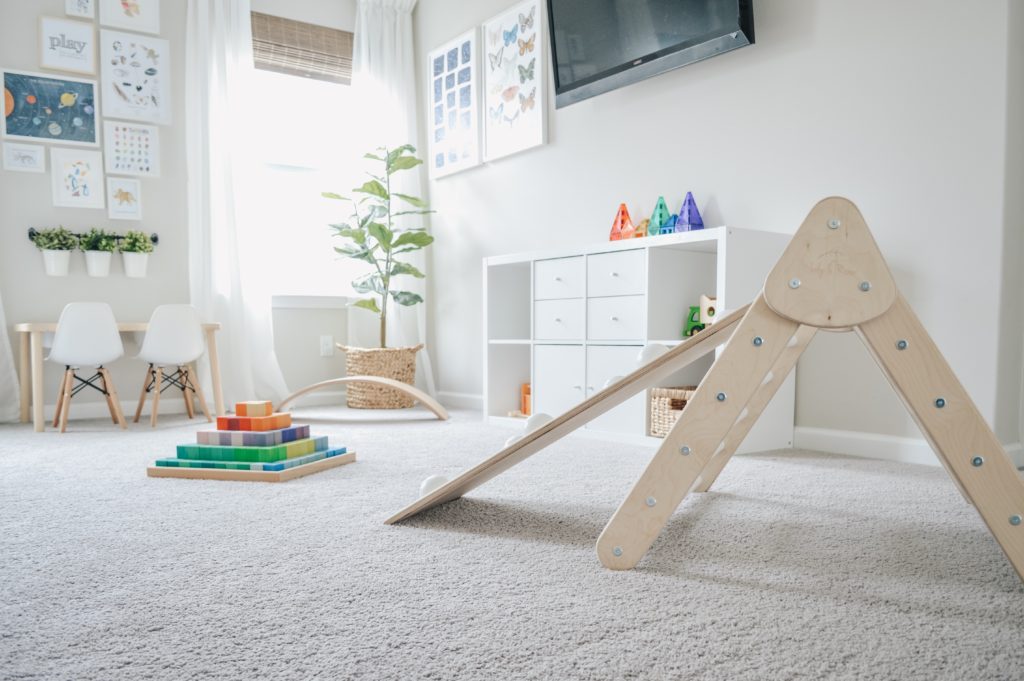
10. A PLACE FOR ART
If your kids love creating drawings, paintings, or other works of art, give them a space to create and display these pieces, where you can quickly and easily rotate them out.
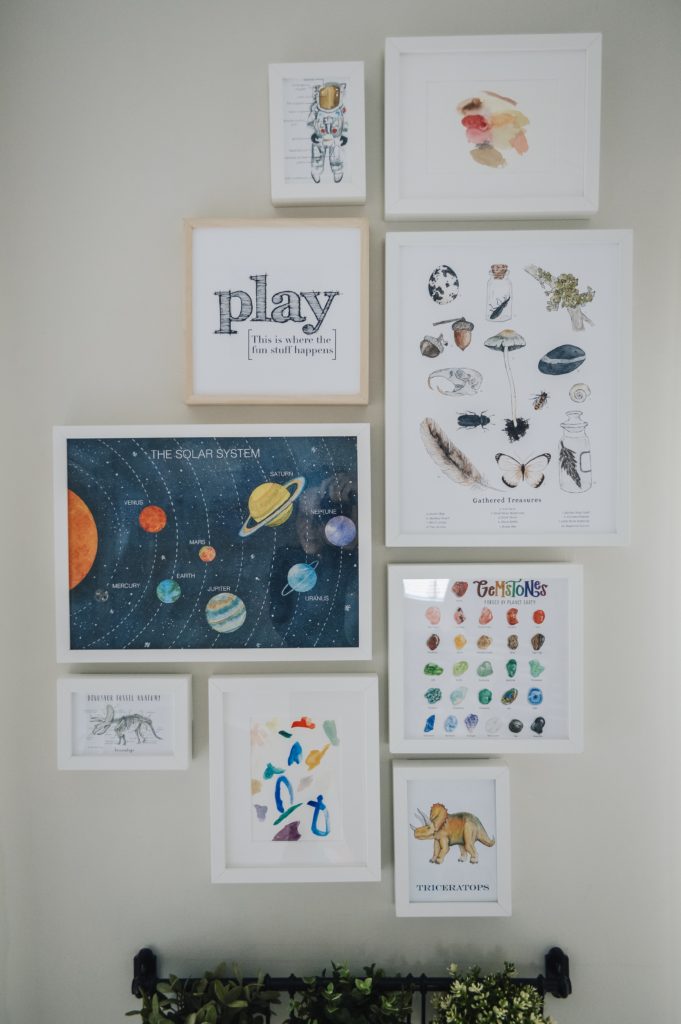

I hope this inspires you and gives you direction on how to set up a functional playroom/space that works for your family and fits your own personal style. Remember, it’s okay to pick which aspects to use and to implement them slowly, as time and budget allow. Please let me know if you have any questions!
This post contains affiliate links. Thank you for supporting what we do!
